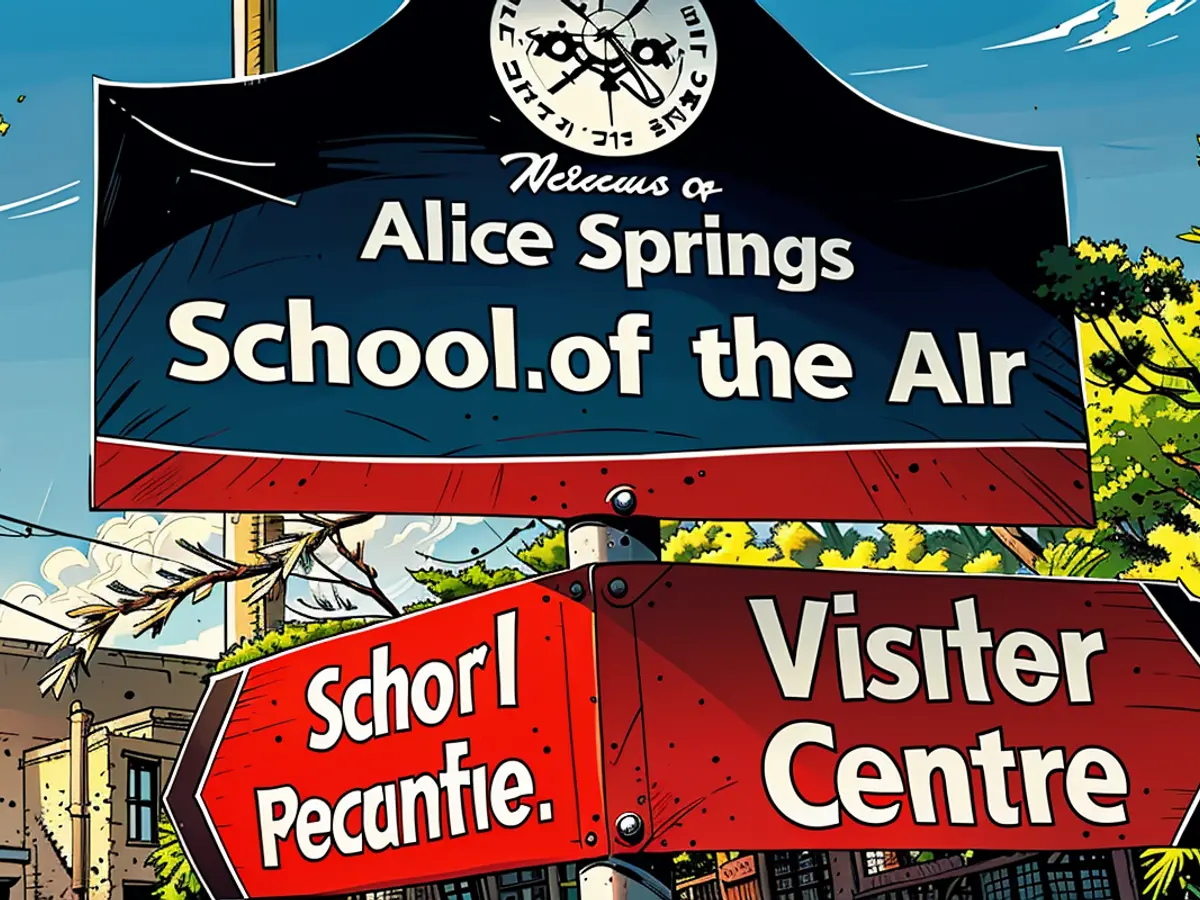Global Hub of Educational Learning Experience - Remote Education in Australia's Outback: Environmental Learning Strategy for Rural Students
Beyond Alice Springs lies an expansive void. Departing from the celebrated Outback hub at the core of Australia, one soon encounters the infinite plains. Crimson soil, spinifex grass, prickly acacia trees, and wilderness extend as far as the eyes can reach. Surprisingly, this remote wilderness houses inhabitants, predominantly cattle ranchers. The most distinguished town with a school might be several hundred kilometers away, posing difficulties for families with offspring.
Prior to the COVID-19 pandemic compelling learners globally to adopt digital distant education, Australia had already implemented a comparable, albeit more rudimentary, model. In 1951, the primary School of the Air was inaugurated in Alice Springs. Since then, "Outback kids" have had the chance to engage in an outstanding education, irrespective of their distance from urban centers.
"It's an exceptional school that substantially transforms the lives of Outback children and secures them a more promising future," informed visitors at the vibrant visitor center. Consequently, younger children need not be separated from their parents to attend boarding schools, according to Kerrie Russell, the school's director for the past seven years. The school offers studies from kindergarten to 9th grade, currently guiding approximately 100 students aged 4 to 15 by 14 teachers.
Although students spend the majority of their time at home, devoid of direct peers, they are part of "the world's most colossal classroom," encompassing an astounding 1.3 million square kilometers in southern Northern Territory.
Currently, there exist 16 School of the Air sites across Australia, from the mining town of Broken Hill in New South Wales to Mount Isa in northwest Queensland to Kalgoorlie in Western Australia.
The idea originated with school inspector Adelaide Miethke. The former teacher moved to Alice Springs in the 1940s and visited the Royal Flying Doctor Service, which has been delivering medical aid to remote areas for the past 83 years, courtesy of airplanes and radio.
In the 1920s, inventor Alfred Traeger devised a simple-to-work Morse radio with a pedal drive, which facilitated communication with distant locations. Adelaide Miethke suggested utilizing the Flying Doctor's radio communication system for instructional purposes.
The first School of the Air was housed in the Flying Doctor's premises. It wasn't until 1978 that it obtained its own building.
"At first, instructors vocalized into the utter silence without interaction with students," recalls employee Paddy McFarland. It wasn't until later that two-way transmission was produced. Even when Princess Diana and Prince Charles visited the School of the Air in 1983 and responded to questions posed by Outback children, exceptionally loud, static radio noises were still pervasive. A video of the royal visit can be viewed in the visitor center.
Only when the worldwide spread of the internet enabled video transmissions did such interactions become feasible, allowing students and teachers to see each other. Since 2001, satellite dishes have been employed. Today, the school employs cutting-edge technology, which includes SpaceX's Starlink satellite network, providing high-speed internet even to the most secluded locations.
Australia is primarily unoccupied with numerous agricultural operations. And these operations are immense: Situated in the south lies the world's largest cattle farm, "Anna Creek," which spans over 23,000 square kilometers. That's roughly equivalent to Mecklenburg-Vorpommern.
On average, farmland measures around 3,000 square kilometers - still larger than Saarland. Most School of the Air students reside on such "stations," as these expansive estates are known. Others hail from indigenous communities, are children of national park rangers, or inhabit remote police stations or mining outposts.
Dust, flies, drought, and deluges are prevalent daily occurrences in these unforgiving landscapes. "However, despite the hardships, children usually find happiness in these isolated regions," recognizes principal Kerrie Russell. "There's always something happening on the farms, and they have the chance to contribute and be helpful from a young age."
Educational materials are dispatched to students' homes, and all learners receive a complimentary computer. The system is funded by regional governments. Actively, 8 to 20 students are educated at a time. Teachers work in a studio equipped with numerous cameras, delivering various perspectives on lesson material. There's also evaluation of performance via an online platform.
Tutors assist with homework
Lessons span a maximum of two hours a day, followed by three to four hours of autonomous learning for youths with a "home tutor." This could be a parent or a dedicated individual.
Each student is visited by their teacher once a year in a durable all-terrain vehicle. Teachers often witness their students' "classroom" for the first time. Four times a year, everyone, including students, parents, tutors, and teachers, gathers at the School of the Air facility.
A week of face-to-face instruction, development of friendships, and expeditions ensue. "These direct interactions are extremely significant," acknowledges director Russell. However, families must frequently traverse numerous hours on red-dirt roads to arrive in Alice Springs. It's a school unlike any other - and yet, somehow, it represents this vast country.
The School of the Air, initiated in Alice Springs in 1951, provides an exceptional education for 'Outback kids', allowing them to engage in studies despite their distance from urban centers. Many School of the Air students reside on vast "stations", expansive agricultural estates scattered across the Australian Outback.






